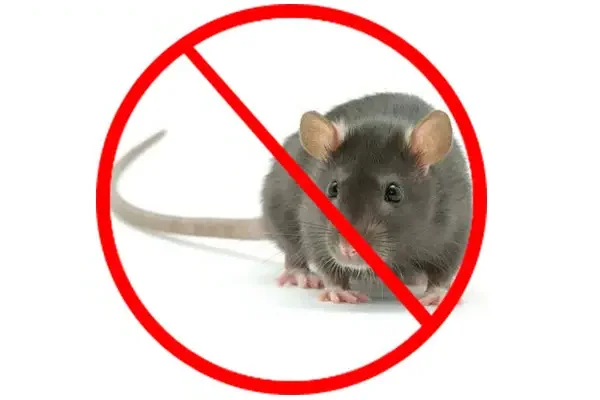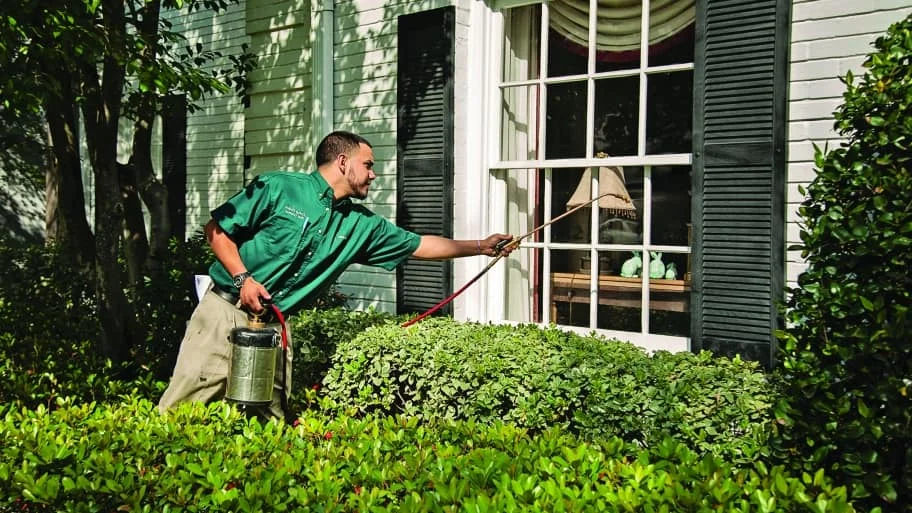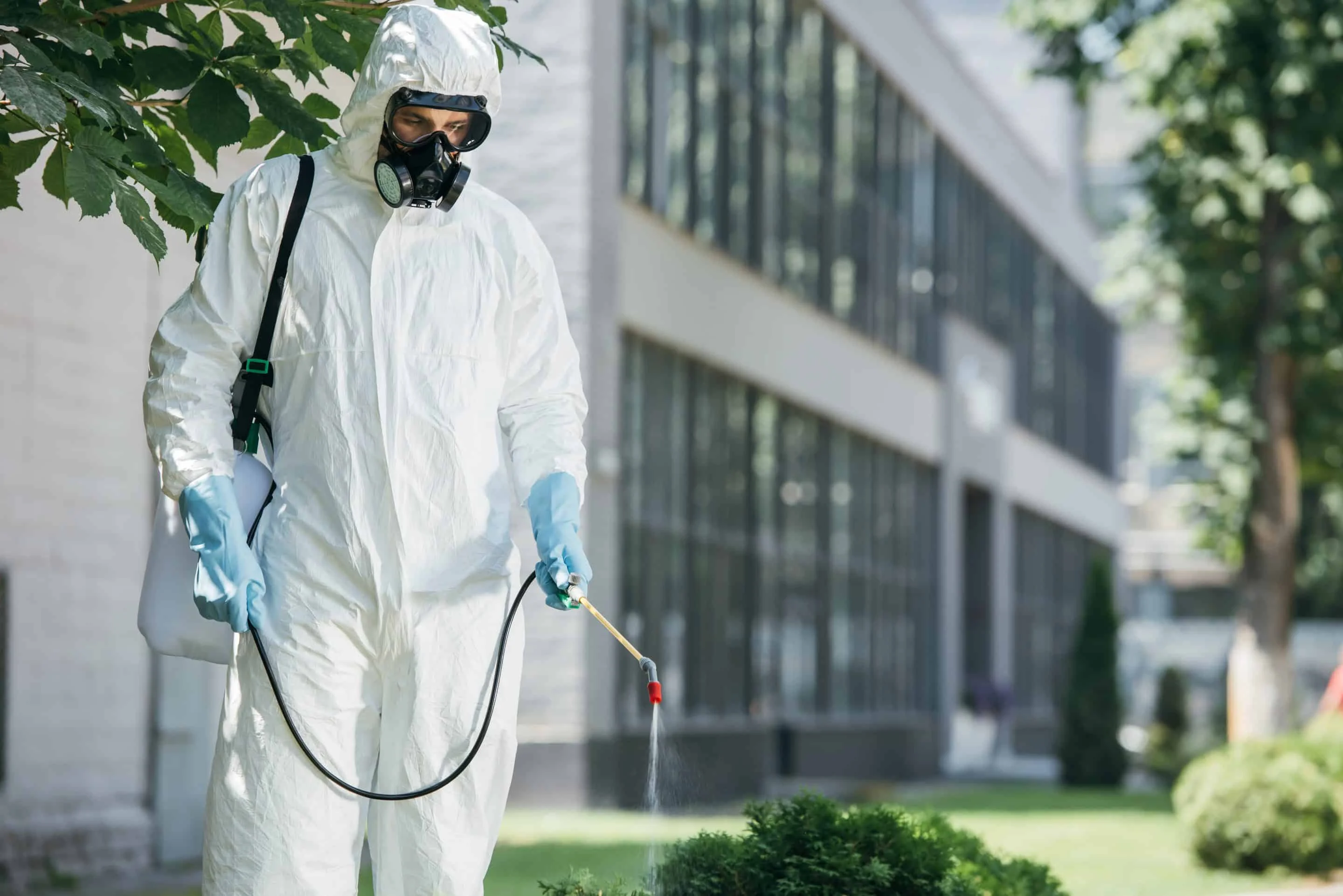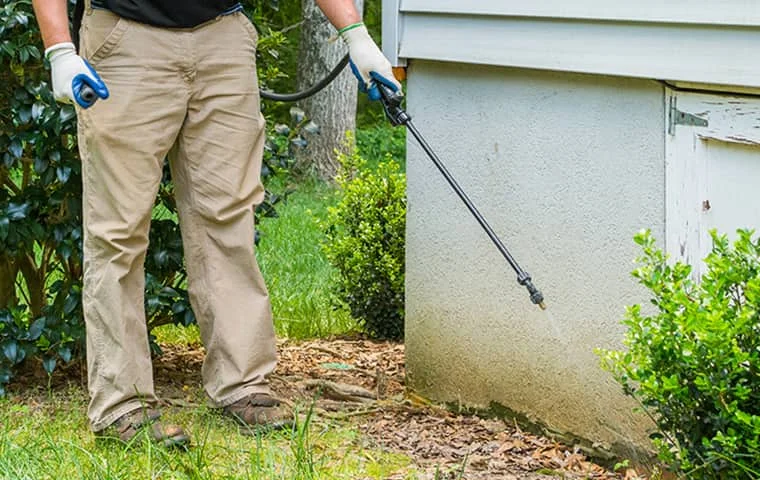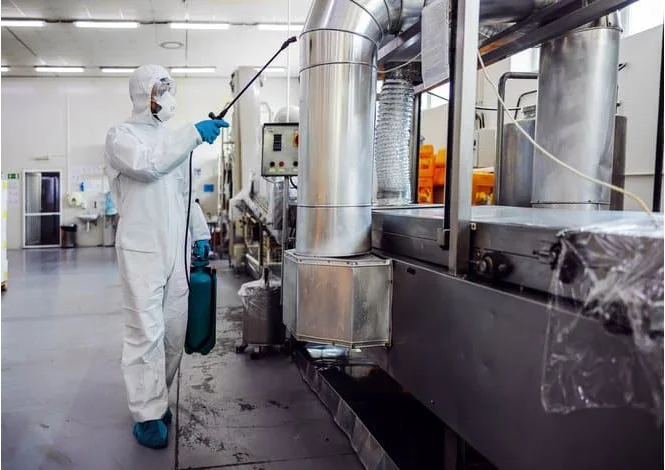From the rolling prairies of the East River region to the rugged Black Hills in the west, South Dakota's diverse landscapes create unique pest management challenges. The state's continental climate with dramatic seasonal shifts—from hot summers to frigid winters—creates distinct pest cycles that require specialized knowledge to manage effectively. Professional pest control in South Dakota means understanding how these extreme temperature variations, combined with the state's agricultural heritage, urbanizing communities, and diverse ecosystems influence pest behavior and habitat.
Homeowners and businesses throughout South Dakota face recurring challenges from pest infestations that can damage property, threaten health, and disrupt agricultural operations. That's why many residents rely on professional exterminators who understand the region's specific challenges. Local experts recognize that both preventive approaches and targeted treatments are essential to maintaining pest-free properties in South Dakota's variable climate. In this guide, we'll explore common South Dakota pest problems, effective management strategies including eco-friendly pest solutions, and why partnering with local professionals provides the most reliable protection for your home or business.
Need help with pest problems? Our South Dakota team offers
emergency pest control
24/7 and thorough
pest inspections to protect your property.
Contact us for prompt, reliable service!
Pest Control Challenges Specific to South Dakota
South Dakota's environment creates unique pest control challenges that require specialized knowledge and approaches. Here's why pest control in South Dakota presents distinctive demands:
-
Extreme temperature variations South Dakota experiences some of the country's most dramatic temperature swings, with summer highs regularly exceeding 90°F and winter lows plummeting well below zero. These extremes create unusual pest pressure cycles, with intense insect activity during warm months followed by rodent and overwintering pest pressure during cold seasons. This climate pattern necessitates adaptive pest management strategies that evolve throughout the year to address shifting pest behaviors and habitat preferences.
-
Agricultural landscape As a major agricultural state, South Dakota's extensive farmlands create unique pest dynamics that affect both rural and urban communities. Grain production attracts rodents that may seek shelter in nearby structures during harvest disruption or winter weather. Livestock operations can support fly populations that impact surrounding properties. Even urban residents often experience spillover effects from agricultural pest pressure, particularly in communities like Sioux Falls, Mitchell, or Aberdeen where development meets farmland.
-
Geographic diversity The stark contrast between eastern and western South Dakota creates distinctive regional pest profiles. The more humid, river-influenced eastern region faces different pest challenges than the drier western areas, particularly the Black Hills ecosystem with its unique pine forests and rocky terrain. Communities along the Missouri River like Pierre, Yankton, and Mobridge experience riparian pest pressures distinct from both eastern and western regions.
-
Outdoor recreation focus South Dakota's emphasis on outdoor recreation, hunting, fishing, and tourism creates specific pest management needs. Properties near recreational lakes, parks, or wildlife areas often face heightened pressure from pests that thrive in these environments. Tourist destinations like the Black Hills, Badlands, and the state's many lakes require effective pest management that balances visitor comfort with environmental stewardship.
-
Urban-rural interface As South Dakota communities grow, many developments expand into previously rural or natural areas, creating "edge habitats" where certain pests thrive. New neighborhoods in expanding areas like Rapid City, Sioux Falls, and Brookings often experience significant pest pressure as construction disturbs established habitats and pests adapt to the changing environment.
These factors make informed, adaptable pest prevention particularly important for South Dakota property owners. Professional pest management companies familiar with these regional challenges can develop customized strategies that address South Dakota's specific seasonal and environmental factors while protecting your property throughout the year.
Common Pests in South Dakota
South Dakota's climate and diverse geography support a variety of persistent pests. Here are the most common invaders that South Dakota homes and businesses encounter:
Rodents
Rodent exclusion work on a Sioux Falls property
Rodents pose one of the most significant pest challenges in South Dakota, particularly during the state's harsh winters when these animals desperately seek warm shelter. House mice and Norway rats commonly invade homes and businesses in urban areas like Sioux Falls and Rapid City, while deer mice frequently infiltrate rural properties, outbuildings, and seasonal cabins, particularly in western regions and around the Black Hills.
These persistent invaders can cause significant property damage by gnawing on electrical wiring (creating fire hazards), damaging insulation, and contaminating stored food and surfaces. Deer mice, prevalent in rural areas, can transmit hantavirus, creating health concerns in addition to damage issues. Effective rodent control typically combines exclusion work to seal entry points, habitat modification to eliminate harborage areas, strategic trapping, and targeted baiting when necessary. For South Dakota properties, particular attention to foundation gaps, utility penetrations, and roof access points provides essential protection during fall and winter when rodent invasion pressure peaks.
Boxelder Bugs
Exterior treatment for boxelder bugs in Rapid City
Boxelder bugs are among South Dakota's most recognizable and frustrating seasonal invaders. These black and red insects breed on female boxelder trees (along with occasionally maple and ash) during summer months, then seek shelter in homes and buildings as temperatures drop in fall. While they don't cause structural damage or bite, their sheer numbers and tendency to stain surfaces with excrement make them a significant nuisance, particularly for properties with boxelder trees nearby.
Management of boxelder bugs requires a proactive approach focused on preventing their entry before cold weather drives them indoors. Professional treatment typically includes targeted applications to exterior walls, foundation perimeters, and entry points in late summer and early fall, creating barriers that prevent mass invasion. For properties experiencing recurring issues, evaluation of landscape elements—particularly the removal or treatment of female boxelder trees near structures—may provide longer-term relief from these persistent seasonal invaders.
Spider Beetles and Pantry Pests
Inspection for pantry pests in a Watertown home
South Dakota's agricultural economy and cold winters create ideal conditions for pantry pests, including spider beetles, confused flour beetles, Indian meal moths, and weevils. These insects frequently infest stored grains, cereals, flour, dried fruits, nuts, and pet foods. In rural areas, proximity to grain storage and processing can increase pressure from these pests, while urban homes may experience infestations from contaminated products or migrations from neighboring units in multi-family dwellings.
Effective management of pantry pests involves a comprehensive approach that addresses both the active infestation and its source. Professional treatment typically includes thorough inspection to identify all infested products, targeted treatment of cracks and crevices where pests may be harboring, and specific recommendations for storage practices that prevent future issues. For commercial properties like restaurants, bakeries, and food processing facilities, more extensive integrated pest management programs help maintain compliance with health regulations while preventing costly product contamination.
Wasps and Hornets
South Dakota's warm summers create ideal conditions for stinging insects to establish and expand colonies. Paper wasps, yellowjackets, and bald-faced hornets commonly build nests on homes, outbuildings, and landscape features throughout the state. While these insects provide some benefits as predators of garden pests, their aggressive defense of nests near human activity areas creates significant sting risks, particularly concerning for those with allergies.
Professional management of stinging insects typically involves thorough property inspection to identify all nest locations, followed by targeted treatment using specialized equipment and protective gear. For properties with recurring issues, preventive treatments to eaves, overhangs, and other preferred nesting sites in early spring can discourage colony establishment. Many South Dakota residents opt for regular monitoring during summer months to identify and address new nests before they develop into larger, more dangerous colonies that are harder to control.
Richardson Ground Squirrels
Richardson ground squirrels (often locally called "gophers") create significant challenges for many South Dakota properties, particularly in western regions and rural areas. These burrowing rodents damage lawns, gardens, and agricultural fields with their extensive tunneling systems. Beyond creating unsightly mounds and potential tripping hazards, their burrowing can undermine patios, sidewalks, and even structural foundations if left unaddressed.
Effective management of ground squirrels typically requires a combination of approaches tailored to the property's specific situation. Professional treatment may include targeted baiting programs, trapping in sensitive areas where baits aren't appropriate, and habitat modification to make the property less attractive to colonization. For larger properties or areas with severe infestations, comprehensive management programs that address the entire affected area provide the most effective long-term results, as new squirrels will quickly occupy abandoned burrow systems if only portions of a colony are controlled.
Eco-Friendly Pest Control Approaches
With South Dakota's strong conservation ethic and abundant natural resources, many residents and businesses prioritize eco-friendly pest solutions that effectively address pest problems while minimizing environmental impact. Modern integrated pest management (IPM) approaches provide effective control with reduced reliance on chemical treatments. This comprehensive strategy combines inspection, monitoring, habitat modification, exclusion, mechanical controls, and targeted applications of reduced-risk products only when necessary.
Many South Dakota pest control providers now offer green service options that prioritize environmental protection while effectively managing pests. These programs often utilize mechanical controls, targeted baiting systems that minimize product use, botanical insecticides derived from plant oils, and physical exclusion techniques. For properties near sensitive areas like waterways, wildlife habitats, or organic farmland, these eco-friendly approaches help maintain effective pest control while protecting South Dakota's natural heritage and agricultural resources.
South Dakota Wildlife Protection
Our South Dakota pest specialists are trained in wildlife-friendly practices that effectively manage pest issues while protecting the state's native species and natural ecosystems that make our state unique.
Below is a comparison of different eco-friendly pest management approaches commonly used in South Dakota:
| Approach |
Benefits |
Best Applications |
| Exclusion Techniques |
Physically prevents pest entry; provides long-term protection without chemicals; eliminates need for repeated treatments.
|
Rodent prevention in homes, sealing foundation gaps against boxelder bugs, preventing bird entry in outbuildings and agricultural structures.
|
| Habitat Modification |
Reduces conditions that attract pests; provides sustainable long-term solutions; decreases need for product applications.
|
Removing harborage for rodents, managing landscape to reduce ground squirrel attraction, eliminating moisture sources for insects.
|
| Mechanical Controls |
Directly removes pests without chemicals; immediate results; precisely targeted to problem areas.
|
Trapping for rodents in sensitive areas, vacuum removal of boxelder bugs, physical removal of wasp nests in accessible locations.
|
| Targeted Baiting |
Minimal product use; focuses on specific pest populations; reduced environmental exposure through contained delivery systems.
|
Rodent control using secured bait stations, ant management with specific bait formulations, ground squirrel control in defined areas.
|
| Biological Controls |
Uses natural processes or enemies; sustainable approach with minimal ecosystem impact; often self-perpetuating.
|
Beneficial nematodes for garden pests, encouraging natural predators of problem species, microbial treatments for specific insect pests.
|
In South Dakota's diverse environments—from urban Sioux Falls to rural farmsteads to Black Hills properties—these eco-friendly approaches can be tailored to address specific pest challenges while protecting the state's natural resources. Professional pest management companies typically begin with a comprehensive inspection to identify the most environmentally appropriate solutions for each unique situation.
Residential vs Commercial Pest Control
Residential Pest Protection
South Dakota homes face diverse pest challenges based on their location, construction, and surrounding environment. Residential pest protection programs typically focus on creating defensive barriers while ensuring treatments are safe for families, pets, and the environment. Many South Dakota homeowners opt for quarterly service plans that adapt to seasonal pest cycles, with additional attention during high-pressure periods like the fall rodent and boxelder bug influx.
From modern Sioux Falls subdivisions to historic Deadwood homes to rural farmhouses near Aberdeen, residential service begins with a comprehensive inspection that identifies current pest issues, potential vulnerabilities, and conditions that might attract pests. Treatment plans are then customized for each property, taking into account specific construction features, nearby habitat, and seasonal pest pressures. For vacation properties in the Black Hills or near lakes like Oahe, Lewis and Clark, or Big Stone, specialized programs address the unique challenges of seasonal occupancy and wilderness proximity.
Commercial Pest Control
South Dakota businesses require specialized pest management that addresses industry-specific needs while meeting regulatory requirements. Commercial pest control programs are designed to protect reputation, prevent product contamination, and ensure compliance with health codes and industry standards. From Sioux Falls restaurants to Rapid City hotels to Mitchell's food processing facilities, each business sector faces distinct pest management challenges requiring tailored approaches.
Commercial service typically involves more comprehensive documentation, including detailed service reports, monitoring device placement maps, and trend analysis to identify and address emerging issues before they become problems. Many South Dakota businesses implement Integrated Pest Management programs that emphasize prevention through improved sanitation, exclusion, and structural modifications, with targeted treatments only when necessary. Agricultural businesses require particularly specialized approaches that protect agricultural products from contamination while maintaining compliance with industry regulations. The state's growing tourism industry also demands discreet, effective pest management that protects guest experiences at hotels, restaurants, and attractions.
From residential pest protection plans to customized
commercial pest control solutions, we provide expert services throughout South Dakota –
contact us today to protect your property!
Why Choose Local South Dakota Pest Control Experts?
Working with pest control professionals who understand South Dakota's unique challenges offers significant advantages. Here's why partnering with local experts provides better results for your home or business:
-
Climate expertise South Dakota's dramatic seasonal weather patterns significantly impact pest activity and treatment effectiveness. Local professionals understand how these climate cycles affect pest behavior, allowing them to anticipate seasonal issues, time treatments for maximum effectiveness, and recommend preventive measures before problems develop. Their familiarity with the state's microclimates—from the drier western regions to the more humid east—ensures regionally appropriate solutions.
-
Regional pest knowledge Local experts understand the specific species and behaviors of South Dakota pests. They know when boxelder bugs begin seeking winter shelter, which rodent species are most problematic in different regions, and how to identify emerging invasive threats. This specialized knowledge leads to more accurate identification and more effective, targeted treatment strategies than one-size-fits-all approaches.
-
Construction familiarity South Dakota's diverse architecture—from historic buildings in Deadwood to energy-efficient new construction in Sioux Falls—creates varied pest vulnerabilities. Local professionals understand common construction methods used throughout the state, the typical entry points and harborage areas in different building styles, and how to effectively protect these structures while respecting their unique characteristics.
-
Agricultural awareness With agriculture playing a central role in South Dakota's economy, local pest control experts understand the relationship between agricultural operations and pest pressure on residential and commercial properties. They can identify spillover effects from nearby fields, recommend appropriate timing for treatments relative to harvest or planting seasons, and provide solutions that protect both structures and agricultural interests.
-
Quick response times When facing urgent situations like wasp nests near entrances, rodent intrusions, or large boxelder bug invasions, local providers can respond quickly with technicians familiar with your area and its typical pest challenges. This rapid response capability is vital for emergency pest control situations that require immediate attention to protect family, employees, customers, or property.
By choosing local professional exterminators who understand South Dakota's unique conditions, you get more effective, responsive service tailored to your specific pest challenges and property needs—all from providers who live in and understand the communities they serve.
Don't let pests threaten your South Dakota property. Our local experts deliver effective pest control in South Dakota with customized solutions –
schedule your inspection today!
Top Cities for Pest Control in South Dakota
Different regions across South Dakota face varying pest challenges based on their climate, development patterns, and surrounding environment. Here are some key South Dakota cities and the unique pest management challenges they face:
Sioux Falls
As South Dakota's largest city, Sioux Falls faces typical urban pest challenges amplified by its rapid growth. The city's expanding development into previously rural areas creates significant pest pressure as construction disturbs established habitats. Older neighborhoods near downtown experience different challenges than newer subdivisions on the outskirts. The Big Sioux River corridor creates riparian habitat that supports mosquito populations and wildlife that can become nuisance pests. The city's diverse housing stock, from historic homes in the Cathedral District to modern developments in southern neighborhoods, requires varied pest management approaches. Commercial districts face challenges from rodents, occasional cockroach infestations in restaurants, and seasonal invaders in office buildings.
Rapid City
Rapid City's location at the eastern edge of the Black Hills creates a unique pest profile influenced by both prairie and mountain ecosystems. Properties on the city's western edge often experience significant wildlife pressure from the neighboring forest habitat, including rodents and occasional larger pests seeking food or shelter. The city's tourist-oriented economy means hotels and restaurants require particularly vigilant pest management, especially during the busy summer season. Winter weather drives significant rodent pressure as mice and rats seek shelter from harsh conditions. Neighborhoods built into the surrounding hills face different pest challenges than those on flatter terrain, with ground squirrels, deer mice, and occasional snake issues more common in hillside developments.
Seasonal Pest Guide for South Dakota
Spring (March-May)
- Ants become active as temperatures warm
- Ground squirrels emerge from hibernation
- Wasps begin building new nests
Recommendation: Schedule perimeter treatments and address any rodent issues leftover from winter.
Summer (June-August)
- Stinging insect activity peaks
- Spider populations build up
- Flies become problematic around homes
Recommendation: Monitor for wasp nests and maintain exterior treatments to prevent indoor invasions.
Fall (September-November)
- Boxelder bugs search for winter shelter
- Rodents begin moving indoors
- Asian lady beetles invade homes
Recommendation: Seal entry points and implement preventive treatments for overwintering pests.
Winter (December-February)
- Rodent activity intensifies indoors
- Spider beetles emerge in pantries
- Cluster flies appear in attics and wall voids
Recommendation: Focus on indoor pest management and rodent exclusion to prevent winter invaders.
What Our South Dakota Clients Say
"After years of battling boxelder bugs every fall in our Sioux Falls home, we finally found a solution that works. Their preventive treatment in late summer completely stopped the invasion we used to get. No more vacuuming up hundreds of bugs daily when temperatures drop!"
- Jennifer R., Sioux Falls
★★★★★
"The mouse problem in our Rapid City cabin was getting out of control until we called for help. Their comprehensive approach not only eliminated the existing rodents but sealed up all the entry points we'd been missing. Now we can enjoy our Black Hills getaway without unwelcome guests."
- Michael T., Rapid City
★★★★★
"As a restaurant owner in Aberdeen, keeping pests out is critical for our reputation. Their commercial service has provided flawless protection for three years running. The detailed documentation they provide has been invaluable during health inspections."
- David S., Aberdeen
★★★★★
Frequently Asked Questions
How often should South Dakota homeowners schedule pest control services?
Most South Dakota homes benefit from quarterly pest control service to address our state's distinct seasonal pest cycles. This typically includes spring treatments as insects become active, summer protection focusing on stinging insects and spiders, fall prevention targeting boxelder bugs and rodents, and winter maintenance for indoor pest issues. However, specific circumstances might require customized schedules—rural properties often need additional attention for ground squirrels in spring and summer, while homes with histories of heavy boxelder bug invasions might benefit from targeted late-summer treatments. Vacation properties in the Black Hills or near lakes may require specialized seasonal service tied to occupation patterns. During your initial inspection, our technicians will recommend an optimal service schedule based on your property's location, construction features, surrounding environment, and specific pest history.
What's the best way to prevent boxelder bugs from invading my home in fall?
Preventing boxelder bug invasions requires a multi-faceted approach implemented before these insects begin seeking winter shelter. The most effective strategy combines several key elements: First, we recommend a professional exterior treatment applied to siding, foundation walls, eaves, and other entry points in late August or early September, before the first cold snap triggers migration behavior. This creates a protective barrier that deters bugs as they approach your home. Second, exclusion work is critical—sealing cracks around windows, doors, utility penetrations, and foundation gaps eliminates entry routes. For properties with female boxelder trees (the bugs' preferred host), we often suggest removing these trees if feasible, especially those within 100 feet of the structure, or treating the trees themselves to reduce bug populations at their source. Finally, reducing sunny, protected areas where the bugs gather in fall (like south and west-facing walls) by modifying landscaping or installing physical barriers can further discourage congregation near your home. These preventive measures, when implemented as a comprehensive strategy, provide the most reliable protection against South Dakota's notorious boxelder bug invasions.
How do you handle Richardson ground squirrel problems without harming pets or wildlife?
Effectively managing Richardson ground squirrels (often called "gophers" locally) while protecting pets and wildlife requires a carefully balanced approach. Our pet-safe ground squirrel control begins with a thorough property assessment to identify active burrows, travel patterns, and specific risk areas. For properties with pets or wildlife concerns, we typically employ several targeted strategies: First, we use specialized tamper-resistant bait stations that allow access only to the target pest while preventing entry by non-target animals. These stations are strategically placed away from pet activity areas and secured to prevent disturbance. We may also implement targeted trapping programs in specific areas, using equipment that's monitored daily and positioned to minimize risk to non-target species. Habitat modification plays a key role in our wildlife-friendly approach—reducing attractive features like open soil areas or tall grass near foundations, and installing barriers around gardens or landscaped areas. For some properties, we recommend installing underground barriers or gravel trenches in key areas to physically block burrowing activity. This comprehensive approach allows us to effectively manage ground squirrel problems while maintaining the safety of your pets and the native wildlife that makes South Dakota special.

